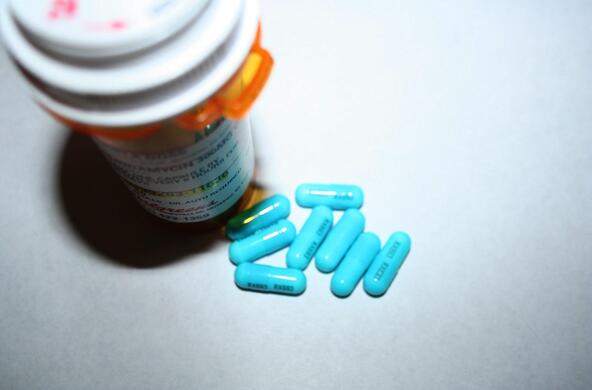Medication drop boxes aren’t impossible to come by – there is at least one drop box available in every county in the Hudson Valley – but they should become more readily available as the state begins to see a full implementation of a three-year-old law.
In July 2018, New York State signed the “Drug Take Back Act” into law. The measure aims to reduce medication misuse and protect the state’s water supplies by preventing unused drugs from being flushed.
Dan Shapley, Director of Riverkeeper’s Water Quality Program, said pharmaceutical pollution is one of the top problems for the Hudson River. With more medication drop boxes, the thinking is that fewer unused drugs would be flushed and end up in the river in the form of pharmaceutical pollution.
Riverkeeper found more than 50 different pharmaceutical compounds, with greater numbers in samples at or near municipal wastewater treatment plant outfalls, when it conducted surveys in the Hudson River estuary.
“By in large, wastewater treatment plants are not designed to remove this kind of pollution,” said Dr. Megan Fork, ecosystem ecologist at Dutchess County’s Cary Institute of Ecosystem Studies. “It’s not that they’re failing, they’re just not designed to do this.”
Instead, the pharmaceuticals pass through the treatment process and go into the water. This includes not just flushed medicine, but also medicine excreted from our bodies after ingestion. There are 16 communities in the Hudson River Watershed that rely on combined sewer systems that overflow into the Hudson River or its tributaries at more than 210 combined sewer overflows.
Medication drop boxes could alleviate some of this pollution until new wastewater treatment technology is implemented. Places like the City of Kingston are looking to replace combined sewer systems with separate storm and sanitary sewers to “help keep sewage from getting into the water,” said Fork, which would help with pharmaceutical pollution.
This summer, a study by the Cary Institute of Ecosystem Studies revealed that an antidepressant commonly detected in waterways could change crayfish behaviors in ways that could harm them and their environment.
“With pharmaceuticals, they’re by design meant to have an impact on our body systems at quite low levels typically,” said Shapley. “We’re putting these mixtures of pharmaceuticals out into the environment — the same waters we drink, and the fish are swimming in — and the concern is we don’t know how to measure the impact the combination of these might be.”
The Drug Take Back Act gives manufacturers of pharmaceutical products responsibility for costs of the collection program. Chain and mail-order pharmacies will be required to provide consumers with collection options, which could be either a drop box or a prepaid mail-back envelope. There would be no cost to the consumer or pharmacy itself.
“We’re just getting ready to see it implemented,” said Shapley. “Consumers, you and me who go to pick up our medicine at the pharmacy, will see a drop box that in the same location to safely dispose of medications we don’t need.”
While the law was passed three years ago, the planned January 2019 implementation was delayed due to COVID-19 and other factors. Riverkeeper, along with other environmental and local government organizations, sent a letter to the Department of Health last summer calling for final regulations and implementation of the act.
Additionally, with the further rise of the opioid epidemic amid the COVID-19 pandemic, lobbyists said the Drug Take Back Act was needed for further prevention measures. “Removing those unused painkillers is getting them out of the medicine cabinet that could lead to the first use of somebody becoming hooked,” said Shapley.
Eventually the law was later updated to take effect on March 10th of this year.
The New York State Department of Health (DOH) said in a written statement that they are currently reviewing proposals from Drug Take Back Program operators and, once the DOH approves the proposals, operators and chain pharmacies will implement them statewide. State health officials did not specify a timeframe as to when consumers might see the drop boxes. By law, pharmacies must display clear signage advertising the availability of drug collection so that everyone is aware of the new policy.
“We should start to see a very new, public facing service that is available widely in New York State for people to get rid of unused medications,” said Shapley.





